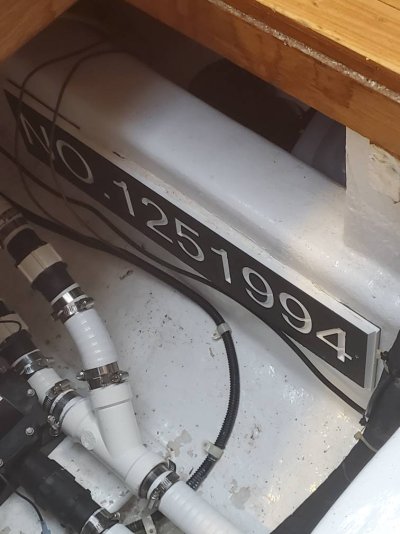rsn48
Guru
- Joined
- Feb 18, 2019
- Messages
- 2,019
- Location
- Canada
- Vessel Name
- Capricorn
- Vessel Make
- Mariner 30 - Sedan Cruiser 1969
Into the final stages of refit and one of the tasks is to repainting a strip that has the names and numbers of the boat. The boat name is in three locations, two in the bow region and one on the transom.
Now I've already been yelled at by a BC Ferry Captain in the Baynes Sound area off of Vancouver Island and Denman Island. I didn't follow proper protocol for a cable ferry. I got a call on channel 16 from the Captain. So this scenario told me the boat name was clearly visible at the bow.
Part of the refit is adding a Seawise davit system, translation: my dinghy on its side off the swim platform blocking the view of the transom during transit. Currently the name of the boat, initials for the old yacht club and city are showing.
So at first, in a nod to laziness, I though I'd just keep the name, get rid of the old initials and location, both out of date. Then I thought, in a further nod to laziness, why not get rid of it all, it would make repainting this strip go faster and easier.
Is there any advantage/disadvantage to a boat name on the transom? I have tried to find any legal discussion of boat name requirements for a boat in Canada licensed but not registered (my boat doesn't not require registration in Canada).
Now I've already been yelled at by a BC Ferry Captain in the Baynes Sound area off of Vancouver Island and Denman Island. I didn't follow proper protocol for a cable ferry. I got a call on channel 16 from the Captain. So this scenario told me the boat name was clearly visible at the bow.
Part of the refit is adding a Seawise davit system, translation: my dinghy on its side off the swim platform blocking the view of the transom during transit. Currently the name of the boat, initials for the old yacht club and city are showing.
So at first, in a nod to laziness, I though I'd just keep the name, get rid of the old initials and location, both out of date. Then I thought, in a further nod to laziness, why not get rid of it all, it would make repainting this strip go faster and easier.
Is there any advantage/disadvantage to a boat name on the transom? I have tried to find any legal discussion of boat name requirements for a boat in Canada licensed but not registered (my boat doesn't not require registration in Canada).

